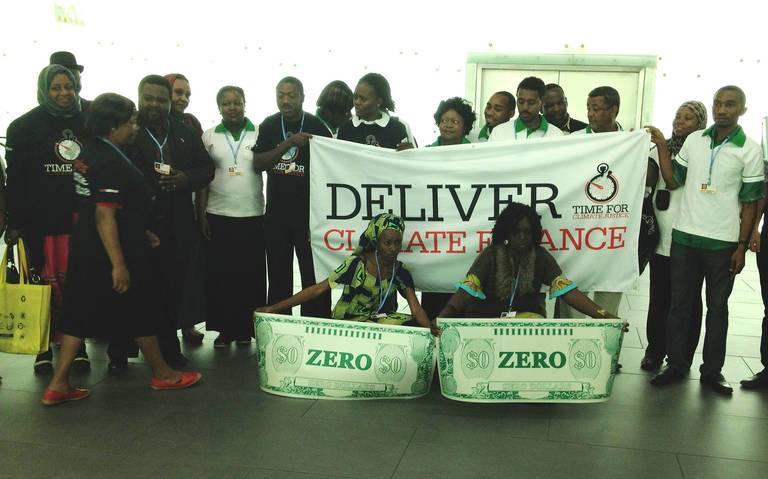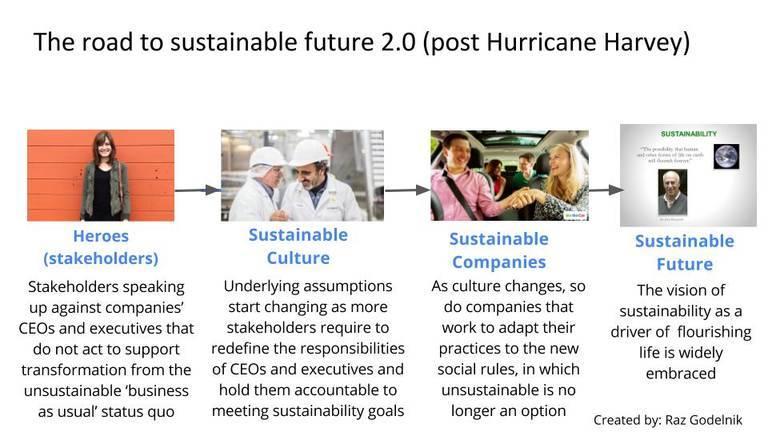As Tourism Surges, Creating a More Inclusive and Sustainable Travel Sector Remains a Challenge


Despite political polarization, fears of terrorism and economic volatility – or perhaps because of it, as people want to get away from it all if they can – global tourism is surging. The United Nation’s World Tourism Organization (UNWTO) has estimated that tourism generated approximately $1.4 trillion last year – $4 billion a day. International travel has grown at a rate faster than global trade the past five years, and now represents 7 percent of global exports of goods and services. Those numbers are the result of over 1.2 billion international trips taken in 2016, almost a 4 percent increase from the previous year.
Tourism offers countries an opportunity to create new jobs and support economic growth. The challenge, however, is to accomplish this responsibly and sustainably, as tourism also exacts its impact on resource depletion, environmental degradation and climate change. And in too many cases, tourism surges while leaving many local citizens behind – or in the worst case, even depriving them of resources such as food and water. So how can global tourism actually spark sustainable development and inclusive growth?
That is the question posed this week at a UNWTO conference focused on jobs, inclusive growth and fostering partnerships in sustainable tourism. Interest in these challenges is keen, as other than the UN’s annual General Assembly, this is the largest event the intergovernmental organization has ever hosted. At least, that fact is according to Edmund Bartlett, Jamaica’s Minister of Tourism, who opened the conference yesterday at a conference center on the shores of Montego Bay.
Minister Bartlett urged the 1,300 attendees to maximize their time this week so they can find ways to grow tourism worldwide without overlooking the economic, environmental and cultural needs of local communities. A focus on more responsible tourism is critical across the Caribbean region, home to the top 13 countries most economically dependent on tourism. “Although the Caribbean is open for business, it can’t continue to be business as usual in the Caribbean,” said Minister Bartlett.
The challenge is particularly acute here in Jamaica. According to Minister Bartlett, 106,000 Jamaican jobs are directly linked to tourism, with another 300,000 jobs dependent on the travel industry – or put another way, one in five workers across this country of 2.8 million people. Minister Bartlett had noted in a recent interview that it behooves the global community to find ways to ensure inclusive growth becomes part and parcel of the world’s growing tourism trade to “so that more of the creativity of the Jamaican people is reflected in the output of tourism and the development of the experiences that visitors pay for.”
While the global travel sector conjures images of top global hotel brands and airlines, Minister Bartlett pointed out that small and medium sized enterprises (SMEs) benefit from this boom. “80 percent of global tourism is driven by SMEs, so a focus on them is crucial if we will truly build inclusive growth,” he said, “and when these SMEs enter new markets, they help provide more goods and services to local communities.”
The challenges facing this conference, reportedly attended by cabinet-level tourist officials from over 150 nations and hundreds of other travel industry stakeholder groups, are staggering. This sector needs to figure out how to accommodate the global rush of travelers when natural resources are already stretched thin. Many of these suddenly trendy destinations do not have the infrastructure to support water and waste management needs. Finally, there is the stubborn question if more tourism really can create decent paying jobs: The minimum wage in Jamaica, for example, was recently raised to $50 a week.
In addition, tourism officials need to figure out tourism’s fundamental problem: how can the sector become more sustainable when it caters to people who for the most part, whether they travel for business or pleasure, want to behave far differently than they do at home? When one isn’t paying the price (economically or environmentally), that person is most likely not concerned about recycling, water consumption or food waste – let alone knowing how that person who checked them into the resort or waited on them at the resort’s restaurant really live. In most industries, businesses have to evolve because of consumers' demands - in other words, the dog is wagging the tail. But in the case of the tourism sector, the tail will have to wag the dog – without the dog noticing.
If global tourism officials can crack this nut, then this transformation of leveraging 1 billion tourists to create a more sustainable future will not be such a daunting task after all.
Image credit: Leon Kaye
How to Make Your Company's Giving Culture Extend Past the Holidays


By Ari Rabban
It’s time for that frantic, end-of-year sprint — again. Business is hopping, employees are more frazzled and customers are harried.
So why would you add another “to do” to the already overflowing task list? Because a simple addition to your plans by "giving back" can enhance worker loyalty, build brand awareness, and support your community throughout the holidays and beyond. Best of all, it’s easy to initiate.
The Long Reach of a Good Deed
Funneling goodwill to nonprofits, families and individuals around the holidays has always been commendable, which is why companies do it every year to the tune of nearly $5 billion. Still, most organizations don’t proactively connect seasonal giving to their overall missions. They simply write a check or encourage employees to make donations and then repeat the cycle next year, which only scratches the surface of the possible impact they can make.
Instead, organizations that springboard their seasonal giving into the other 10 months of the year can ingratiate themselves to their communities and better attract emerging talent. In fact, more than half of Millennial job seekers take charitable giving into consideration before signing on with a company. As well, team members working for organizations that support causes witness augmented productivity, heightened customer service, and reduced turnover, all of which indicates that giving back is much more than a holiday toy drive.
For instance, with the help and backing of their company, team members can pool their resources — and perhaps get matching funds — to do anything from “adopting” a charity to presenting monies to a local nonprofit. Not only will this enable them to work as a team outside of the office and beyond tech tools like Slack, but it can also render tangible, charitable results in a shorter time. Similarly, encouraging teams to volunteer for the American Red Cross, Habitat for Humanity, or other projects gives individuals a chance to invest in “sweat equity” and naturally fosters camaraderie. Colleagues can bond in a low-stress environment.
4 Ways to Give Back All Year
Because giving back has so many upsides that aren't holiday-specific, businesses should continue the kindness and employee growth by implementing a visible culture of community engagement and support. Here are four steps they can take to do so:
1. Sponsor worthy local organizations. Every community has organizations that could use your help. Seek them out, rotating among the ones that align most with your brand. For instance, if your company is sports or athletics-oriented, sponsor a youth baseball league or a seasonal United Way capital campaign push.
Donating money — or employee time – toward a nonprofit's efforts makes both entities more visible in the community. Plus, the organizations you support will add your company to their marketing materials. You can add theirs, too, so be sure to snap shots of your team members volunteering to post on social media. Over time, your company name will become linked to the charity’s, fostering recognition and promotion.
2. Attend startup events. All businesses need support in their early days, so contribute resources to startups, be they established or in the conception phase. Taking your team to events that support new businesses allows you to network with young leaders, learn new skills or new ways of doing business, and contribute to those organizations or individuals you meet. You could also discover a future employee.
While at these events, don’t worry about getting instant sales or scoping out public relations opportunities. Simply immerse yourself in the enriching experience and focus on building personal relationships. Doing so can serve as a strong model of leadership for your teams.
3. Give a portion of your corporate proceeds to charity. Some companies already design their business models to support a specific nonprofit. In this way, customers know that their purchases go toward a good cause, which is especially important when 85 percent of buyers want to actively support companies that give back.
Still, "giving back" doesn't mean giving away everything. Small amounts add up, and you can even include a “ticker” on your website to illustrate to your customers how much they've helped you donate.
4. Create a “random acts of kindness” culture. You’re not a part-time leader, so neither should your company be a part-time do-gooder. As a leader, I use my position to promote random acts of kindness weekly, if not daily.
Sending your newest sales talent a note telling them what a great job they did closing a difficult prospect or dropping a congratulations card in the mail to your marketing department head’s spouse when you hear they snagged a big promotion go a long way in promoting employee engagement and retention. People love to work at businesses that support them.
Incorporating "giving back" into your corporate ethos by supporting local organizations and events, donating to charities, and creating a culture of inclusion and appreciation foregrounds social good and strengthens your business. And ultimately, it just makes sense — so celebrate the season of giving, and then, even after the snow thaws, keep on giving.
Ari Rabban is the CEO of Phone.com and a veteran of the IP communications industry. Phone.com’s virtual phone service builds on the digital VoIP industry experience of its founders to deliver a complete suite of enterprise-grade unified communication services at an SMB price. Ari was named among the Top 20 Most Influential People in VoIP 2012 and currently serves on several boards, including the New Jersey Tech Council. You can follow him on Twitter @arabban.
Green Climate Fund Applicants Still Waiting for Crucial Mitigation Funding


Seven years ago, while world leaders gathered in Cancun to discuss how to address climate change, a new world order was in the making.
Or at least it sounded like it was.
Some 5,400 representatives of United Nations member states attended, eventually hammering out a landmark decision that would ensure that developing nations would be able to combat the threat of rising seas.
Countries like Mongolia, Tajikistan and Kiribati, a Pacific island whose very existence was threatened by rising waters, were to receive aid with the help of more affluent nations and private enterprise. The program, the Green Climate Fund would not only help ensure smaller countries could meet formidable economic challenges, but would address the planet’s greatest environmental problem: global warming.
Almost a decade in to the project however, funding organizations are beginning to question whether the program will actually work. Critics say it isn’t that countries aren’t investing. More than $2 billion has been allocated from the fund and $6 billion has been co-financed. But places like that small Pacific island, Kiribati, have yet to see any of it.
That’s peculiar, because according to the Green Climate Fund’s website, Kiribati and many of its neighbors have already signed an agreement of partnership with the fund’s sponsors, albeit only recently. Tonga’s agreement with the fund was only formalized this month.
For the Republic of Kiribati, an atoll of 33 coral islands that needs buttressing from the rising seas and a desalination plant that would help it maintain its fresh water supply, that delay could be a real problem. Its population of 110,000 residents must either find a way to mitigate climate change quickly, or leave.
The science relating to sea level rise has been in a great state of flux,” states Kiribati’s Climate Change website. “Some long-term predictions of sea level rise for Kiribati have suggested that there is a margin of safety present, but this is regularly contradicted by local eye witness observations.
And funding for other projects have received criticism as well. According to an expose on the issue by New York Times business writer Hiroko Tabuchi, the problem that is taxing mitigation projects in places like Kazakhstan, Mongolia and Tajikistan isn’t that the money hasn’t been invested, but where it’s going.
Funding organizations have expressed concern that there is often a lack of transparency about how the monies are distributed and the efficacy of projects. An approved contract that has helped put solar on the map in Rwanda and Uganda, for example, is being administered from the tiny island of Mauritius, long considered a tax haven. A $50 million loan was approved to repair an antiquated dam in Tajiskistan, but faces huge liabilities because of the likelihood of worsening climate conditions down the road.
And funding agencies that raise questions, says Tabuchi, often found the projects were approved despite objections.
This isn’t the first time that the Green Climate Fund has faced criticism. In 2015, the fund was reportedly having problems getting sponsors to meet their commitments. By October of that year, the organization faced difficulty meeting its stated funding goal because not enough funds had been collected. Even the United States, which promised a total of $3 billion into the fund is $2 billion short of its commitment.
But there’s also questions about the way the funds are being restricted. The German Climate Finance website reported that mainly UN-institutions and regional development banks have access to GCF-finance." In total, 83 percent of the approved projects are implemented by internationally acting institutions, including the Deutsche Bank ...” The website points out that large global banks do have the experience to handle complex, multi-project funding programs like this, but points out that the process excludes the administration and oversight of national institutions.
And the issue isn’t just whether national organizations are being deprived the ability to oversee and develop projects themselves, says BankTrack.org, a website that reports on banking transparency and the projects they support. As early as 2015, nonprofit organizations were sounding the alarm that banks that had been implicated in scandals were giving access to funding projects for the Green Climate Fund.
The Green Climate Fund (GCF) must not channel its money through two scandal-ridden international commercial banks that are leading funders of the coal industry, say civil society groups at a meeting of the GCF's Board in Livingstone, Zambia,” reported BankTrack.
Meanwhile, the Republic of Kiribati has realized it is running out of time and is formulating its own emergency climate action. It’s working on a multi-stage mitigation process that includes raising the elevation of vulnerable neighborhoods and planting mangrove trees in large numbers to slow coastal erosion.
Will it be enough to save a small sea-level island?
No one knows. But one thing that has become clear to remote areas like Tonga and Kiribati, havens for island tourism is that fixing their climate problems will most likely come at the expense of their own efforts, not the generosity of rich countries or well-planned global commitments.
Flickr images: Austraila Aid, Dept. of Foreign Affairs (1) and (2)
How Technology Can Empower At-Risk Students Before It’s Too Late


An overarching theme of the recent Dreamforce conference in San Francisco is that cloud computing can be harnessed to accelerate social good.
One of the fields in which technology can make a huge difference is in education, from pre-school to technical education.
After all, we are far beyond the days of past generations when teachers dealt with at-risk kids by the old referral system – as in the teacher sauntering over to his or her desk, yanking out a pink slip, pushing the intercom button, and alerting the school’s secretary that someone, yet again, was being sent over the principal.
The social problems are much more stubborn now: poverty, hunger, homelessness, absenteeism and myriad of other challenges. But what if these at-risk kids can be identified weeks ahead of them acting out, instead of weeks later, when it is often too late?
Big data and the right technology used the right way promise to help fix the challenges teachers, support staff and administrators confront on a daily basis. The problem, however, is that schools almost always lack the capacity to develop such an architecture. “In many communities, Coca-Cola knows their supply chain better than the local education officials [know their] kids,” said Andy Cunningham of the Aga Khan Development Network, a network of agencies that help deliver social services worldwide.
In fairness, schools are often more resourced and have more highly specialized staff than ever before. But challenges arise when it comes to the delivery of education services. “'We have become program-rich and systems-poor,” said Adeeb Barqawi, President and CEO of ProUnitas, a Houston-based technology NGO that offers a data-driven blueprint it says can eliminate academic barriers to student success.
Barqawi started his career teaching at a high school through the Teach for America program. Immediately, he recognized many students’ non-academic barriers, such as hunger and mental health struggles, were a constant burden. But he also noticed that many of his students still had the same goals and aspirations as their more fortunate classmates; it was just that in Baraawi’s words, they were hampered by a “weak social safety net.”
“I was ready to teach, but my kids walked in hungry, or had mental health issues, but our school counselors were overwhelmed,” Barqawi told an audience during Dreamforce’s Idea Forum.
Out of that experience came the inspiration for ProUnitas. In 2014, Barqawi launched the nonprofit with a mission to view the opportunity gaps that existed between students of means and students in high-poverty, high minority neighborhoods – notably at where he taught, Kashmere High School, which at the time was the lowest performing high school in Texas.
From Barqawi’s point of view, what schools and counselors needed was a robust platform that could help educators flag the students who were in need. One problem was that no matter how stellar, or how much some teachers would go above and beyond their duties, the reality was that burnout and career moves often left schools lacking institutional memory. “'We cannot build schools on superheros,” Barqawi said.
The result from that passion, empathy and technological know-how was the development of the ProUnitas platform. The scalable technology solution helps schools become more responsive to at-risk students’ needs, cements partnerships with service providers and generates opportunities for those same providers to easily work with other educators for collective impact. In the end, ProUnitas brings together education and community leaders to reach alignment on the most challenging issues facing their schools.
“We know that students come to our classrooms with so many things that prevent them from learning,” Barqawi told TriplePundit’s Nick Aster during an interview at Dreamforce. “Now we’ve removed those barriers so that we can really empower school districts to fulfill their mission of educating students.”
Now, ProUnitas allows warning signs to be recorded at the time, instead of relying on teacher's memory months after the fact. Student counselors and other support staff can use ProUnitas’ platform to access local services. Schools can also have a ProUnitas case manager visit campus to connect kids with the social services or support they need the most. “The data looks at attendance and behavior, and the value is in the empowerment piece with the ability to retain and implement those services,” said Barqawi.
Kashmere High School still faces a steep uphill climb. Last week, the local school district approved a turnaround plan for the school with the hopes that the entire district can avoid a state turnover. But as noted in Houston’s local press, the overall mood and energy at the school has improved at the school as ProUnitas has stepped in to coordinate with social services agencies so they can offer necessary services. The school is still marked as “IR” (improvement needed) by the state of Texas - at last count it was only two student test scores from escaping that designation.
Meanwhile, a nearby elementary school also benefits from ProUnitas’ services: the technology matches services to at-risk students. This frees up teachers to do what they do best: teach.
Image credit: ProUnitas/Facebook
Facebook Fight Against Fake News: Is It Working?


Facebook's effort to stamp out "fake news" on its pages may come a little too late. Last week the company announced that it was launching a program to alert readers when they had "liked" a page that was rated as fake news. In that way, the company said, it could educate readers about how to determine fake news and the importance of understanding its potential impact.
"It is important that people understand how foreign actors tried to sow division and mistrust using Facebook before and after the 2016 US election," the company said in a blog post.
But for a company that has traded on the concept of spirited sharing of everything from favorite recipes to the latest late-night gossip, dissecting just what is fact and what is fantastic still seems to be a tall order.
And the largest problem may be the company's stance about fake news itself.
In November 2016, Facebook CEO' Mark Zukerberg's said he felt it was a "pretty crazy idea" to think that people's voting habits could have been influenced by fake news on the Internet. His position has since changed, in part because Facebook found thousands of postings from questionable sources, including Russian operatives.
But there have also been more countries that have reason to think their elections are being tampered with. Italy, which is gearing up for national elections in a few months, is the latest country to question Facebook's ability to monitor paid advertisements and postings from foreign operators.
According to New York Times, Facebook has reportedly told the Italian government that it is readying a "task force" to work on the problem and that they would be on hand to fact-check postings and minimize problems.
But according to Facebook's most recent communique to the New York Times, even that tidbit of news can't be confirmed. Facebook refused to confirm whether there would be a task force on hand in Italy, stating only that it couldn't comment on the matter.
And other efforts by the Internet company to explain how it will eliminate fake information from its website have received criticism as well. Earlier in November, the company said it would be installing software that would provide "trust indicators" for postings and advertisements. The little "i" would pose as a go-to place for finding out more about the posting's "trust" rating. But as Mashable writer Kerry Flynn points out, that may not be what readers want -- or need.
"For starters, it's doubtful anyone will actually bother clicking that little icon," said Flynn. And, not every poster will be featured under that program.
And that may be because Facebook is still uncovering a trove of data about postings that were, in effect, fake news all along.
What will be interesting to see is how rooting out the legions of fake news posters will affect its profit margin. The company is already bracing for a 45-60 percent rise in operating expenses next year due to the amount of work this process has taken. The question at this point is whether Facebook can really build a product that can differentiate between intentional inaccuracy and the human love for fantastic tall tales.
Flickr images: Sean MacEntee; JD Lasika
Conservative Investor Peter Thiel Loses Another Silicon Valley Connection


Silicon Valley billionaire Peter Thiel gained considerable notoriety during last year's presidential election cycle when he lent his name, and a $1.25 million campaign contribution, to boost Donald J. Trump into the Oval Office. That has created considerable tension between Thiel and most of his peers in the tech sector. In the latest development, Thiel no longer has a relationship with the legendary startup incubator Y Combinator.
TriplePundit began following the unusual trajectory of Peter Thiel, a noted libertarian, in May 2016, when he first made headlines as Silicon Valley's only active Trump supporter. Another thread in the Thiel story is his role in the bankruptcy of one of his most persistent public critics, the Gawker Media news organization. The reach of a conservative billionaire into politics, corporate investment and free media enterprise is a key issue for a publication covering the intersection of sustainability and the economy like TriplePundit
Peter Thiel out at Y Combinator
Peter Thiel gained A-list status in Silicon Valley through his early investments in Facebook, PayPal and others. Cementing his stature was the position he enjoyed as a "part-time partner" with Y Combinator. Hundreds of new businesses have benefited from Y Combinator's mix of seed money and mentoring, and several have gone on to become billion-dollar enterprises.
The relationship apparently continued throughout the 2016 presidential campaign. In the runup to Election Day, investor Ellen Pao severed ties between her non-profit Project Include and Y Combinator, citing Thiel's $1.25 billion campaign contribution (emphasis hers):
While all of us believe in the ideas of free speech and open platforms, we draw a line here. We agree that people shouldn’t be fired for their political views, but
this isn’t a disagreement on tax policy, this is advocating hatred and violence.
At the time, Y Combinator President Sam Altman defended Thiel (cited by Bloomberg):
"It’s important to keep talking to people who hold very different views," Altman said in a company video the month after Trump assumed office in January. Altman defended Thiel’s track record and at the time pledged to keep him involved.
Y Combinator, a startup accelerator famous for launching Airbnb Inc., Stripe Inc. and Reddit -- has ended its affiliation with Thiel. That could limit his access to the crop of up and coming startups that regularly emerge from Y Combinator.
To be clear, Y Combinator did provide Thiel with some cover. According to a report in Buzzfeed News, Y Combinator ended the entire "part-tijme partner" program some time last year. However, a number of people involved in that program are still affiliated with Y Combinator through another program, and Peter Thiel is not among them.
Cracks in the Facebook facade
Facebook is another high-status arena for Thiel. He was the company's first major investor and his position on the Facebook Board of Directors dates back to 2005. However, that has become a headache for the company, which has been forced to defend him repeatedly over the Trump connection.
In June 2016, Facebook COO Sheryl Sandburg leveraged the familiar "different views" argument to fend off the critics (cited in Forbes):
“… We have very independent board members with very independent thoughts that they share publicly.”“Those strong people make really good board members because they have strong views, and they’re not afraid to think differently than other people, which has served Facebook well …”
Facebook founder Mark Zuckerberg also deployed the "different views" argument to defend Thiel in the runup to Election Day 2016. In a note on an internal company message board, Zuckerberg explained that caring about diversity is "a lot harder when it means standing up for the rights of people with different viewpoints."
In the latest development, eyebrows were raised last week when Thiel sold the majority of his remaining stock in Facebook, but the move was reported to be the latest in a series of planned transactions.
Although the stock move does not appear to signal a growing break, it is stirring up some old news that Thiel would probably like to keep dormant. CNBC pointed out that the new stock sale underscores a colossal misstep by Thiel back in 2012. He sold a much larger share that year, when Facebook went public:
While Thiel is in no way hurting for cash, he would have been much wealthier had he stashed those Facebook shares away after the 2012 IPO.
Instead, as part of a pre-arranged plan, he sold almost 80 percent of his stake within a few months of the IPO at an average price of less than $20 a share. Facebook is now trading at $180.50.
What about Gawker?
In another development that stirs the bad news pot, last week news surfaced that Thiel may be interested in buying the Gawker.com website and its assets.
For those of you new to the Gawker episode, in 2016 word leaked out that Thiel was the secret funder behind a lawsuit against Gawker, brought by the entertainer Hulk Hogan. The suit was ultimately successful, Gawker filed for bankruptcy, and Univision bought some of Gawker.com's sister sites.
In defense of his support for Hogan, Thiel claimed a personal motivation for championing the "little guy" against "media bullies." However, there was a financial angle as well. In the field of business reporting, Gawker was one of Thiel's most persistent critics, especially when it came to highlighting the failure of his hedge fund Clarium Capital.
It could be that Thiel hopes to leverage Gawker.com to lobby for his business interests and political inclinations, following in the footsteps of the Koch brothers and the Mercer family.
According to reports in Buzzfeed and elsewhere, a more likely explanation is that Thiel would buy Gawker.com and delete the articles offensive to him.
Meanwhile, the Gawker.com archive is still available online.
Photo: JD Lasica/flickr.
Walmart signs on to sustainable sourcing for seafood


Walmart, the world’s largest retailer, is to reveal how and where it sources its seafood.
The international group has joined the Ocean Disclosure Project, a transparency website established by the Sustainable Fisheries Partnership, the Honolulu-based professional body that promotes ethical standards in the fish and shellfish industry.
Walmart is expected to use the site to name the waters where it finds its seafood and the equipment used, and to give information on management, environmental impacts, certifications and projects to improve its practices.
Laura Phillips, Walmart’s senior vice-president of sustainability, said: “We are proud of our efforts to make the seafood we sell more sustainable, and joining the Ocean Disclosure Project is one more way we can show our passion and commitment for sustainability and transparency.
“[The project] provides an important service to consumers and other stakeholders.”
Other retailers that have joined the project include Asda, Co-op Food and Morrisons in the UK, and Publix, based in the United States. Seafood suppliers on the site include North Atlantic, Joseph Robertson and the French company Davigel, and aquaculture feed manufacturers include Biomar, Cargill/EWOS and Skretting.
Walmart, as the industry big name, with 2.1 million employees, could have the greatest influence, attracting more retailers and suppliers, said Blake Lee-Harwood, the Sustainable Fisheries Partnership’s strategy director.
Lee-Harwood said: “It is fantastic news that the largest retailer in the world has now joined the Ocean Disclosure Project. Walmart has made a huge contribution to making seafood more sustainable and is now showing real leadership in adopting a more transparent approach to the sustainability aspects of the fish and shellfish the company sells.”
The Sustainable Fisheries Partnership itself has a new influential corporate partner. The Nueva Pescanova fish and seafood group, which is based in Galicia, north-western Spain, and operates in more than two dozen countries, says it welcomes working with the partnership to improve the sustainability of its supply chain.
Juanjo De la Cerda, the Nueva Pescanova corporate director of research, quality and sustainability, said: “Working together with the partnership is an important step that will help us to be more transparent and contribute more actively in improving the conservation of resources and the rationalisation of fishing, a commitment that has been present in the DNA of our company for almost six decades.”
In a related development Canadian businesses and consumers represented by SeaChoice, which promotes seafood sustainability, are in talks with government inspectors to introduce stricter labelling regulations.
The consultations follow a scientific survey by Guelph University, Ontario, for SeaChoice, showing that many supermarkets were selling seafood that was mislabelled and poorly or fraudulently labelled, thanks to vague legislation. The only information needed in Canada is the common name and the country of final processing.
Of the labels collected, only three per cent received top marks for good practice. The researchers found seven per cent acceptable, 26 per cent unsatisfactory, 57 per cent poor, and one per cent fraudulent.
However, the inadequate regulation made it difficult to decide whether mislabelling resulted from lack of supervision or premeditated resistance to giving more information.
Colleen Turlo, SeaChoice’s national co-ordinator, explained: “If something was listed as snapper but in the Canadian regulation it should be technically called Pacific snapper, we would just consider that mislabelling because it’s not necessarily misleading or too untruthful.
“But if something is labelled as cod and it is actually hake, pollock or a different species, we would consider that fraud.”
One important reason for more precise information is that 73 per cent of Canadian seafood is exported, mainly to countries with tougher labelling laws.
The present consultations between SeaChoice and the Canadian Food Inspection Agency are expected to produce new regulations in spring 2018.
Another clean-up is taking place in China. Government officials have closed 30 illegal aquaculture sites in an area of Hunan province that is important in the country’s freshwater crab and fish production. A pollution task force had promised to eliminate “unlicensed breeding operations”.
Policy Points: When Employers Take the High Road, Society Moves Ahead


By Michael Eberhart
Forward-thinking business leaders are increasingly choosing to take the “high road” by offering their employees better wages, flexible schedules, and benefits like paid family leave and paid sick days. They understand that taking care of their employees is good for their business – increasing morale, productivity, and profits. But beyond that, such family-friendly policies deliver benefits across the entire economy, including higher consumer demand and lower costs for social safety nets.
Unfortunately, many lawmakers mistakenly believe that taking the low road is the only way to make a profit. That’s because they mostly hear from traditional business interests that carry that message. But what if they heard instead from responsible employers who prove every day that high-road business practices can be very profitable? Since the high road delivers much more benefit to society, educated policymakers should use public policy levers to encourage and spread its adoption. That’s the goal of a new report from the American Sustainable Business Council (ASBC) that makes the case to policymakers that the high road is the best road for the country.
ASBC’s new report, “The High-Road Workplace: Route to a Sustainable Economy,” lays out a compelling argument for companies to adopt high-road policies. In an ideal world, every business would choose to adopt high-road practices because they are good for business, good for people, and good for the planet – the triple bottom line that we all understand. Unfortunately, many companies are still stuck on the low road and focused on short-term profits as their only goal.
Low-road businesses hurt us all
But taking the low road has high costs for society. The lack of a national policy for paid family leave does long-term harm to children, reduces parents’ opportunity for higher earnings, decreases overall productivity, and holds back women’s participation in the labor force. According to the Center for American Progress, between 13-25 percent of American families that file for bankruptcy do so after missing work caused by illness of a parent or family member. Other underpaid employees are forced to rely on EBT benefits and other government-funded safety nets to make ends meet. According to a 2015 report by the Labor Center at UC Berkeley, low-road practices cost over $152 billion in public support per year.
High-road practices can reduce those costs while building a stronger economy. Low-road business leaders hold the outdated belief that companies must pick between profit or social responsibility, but evidence from many successful high-road companies proves this is a false choice. High-road benefits create happier, more productive employees, reducing the costly turnover that can drag down an employer’s profits. This is just one example of the “virtuous cycle” described by Christine Cikowski, co-founder of Honey Butter Fried Chicken, who is profiled in the report.
“We can afford to pay and treat our people decently because we have a great restaurant, and we have a great restaurant because we have happy, dedicated, motivated employees,” she says. “We treat our employees really well, so they’re happy to come to work and they’re motivated to work hard.”
ASBC’s report shows that adopting an economically and environmentally sustainable business model means that employees get fair, livable wages and family-friendly benefits, while companies see better retention and productivity. Customers also increasingly choose to support values-based businesses, making the high road even more profitable.
“We’ve seen that family-friendly policies don’t just benefit the person, they benefit the company,” says Amy Hall, director of social consciousness at Eileen Fisher. She makes a persuasive case for the value of high-road practices in ASBC’s new report.
“If you’re under stress from a family illness or new baby at home but you can’t take the time off you need, you cannot possibly bring your whole self to work,” she says. “When people are given time to handle a life situation, they show their thanks with passionate productivity when they come back. It improves everyone’s morale and loyalty to know they won’t be forced to choose between people they love and work they love.”
How to Steer the Nation onto the High Road
But leaders like Cikowski and Hall will not change others on their own. Most low-road businesses continue to grow and turn a profit. Why should they change? Waiting for other companies to move to new business models and catch up to high-road leaders could take decades. That wasted time is a lost opportunity for companies, employees, and the economy as a whole.
Government can help companies move to the high road more quickly by implementing the policy solutions outlined in ASBC’s report. These recommendations include creating a national paid family and medical leave insurance program that would build on the FAMILY Act already in congress. Another solution would increase the national minimum wage and index it to the cost of living. Finally, governments can update procurement standards to make high-road practices a minimum threshold for federal, state, and local contract eligibility.
Adopting these public policies would help more American companies embrace best practices that benefit our economy and our society. But lawmakers need to be educated. They need to hear from more business leaders about how great the high road is for their businesses. Only when lawmakers believe it's possible will they set about the task of making the U.S. a high-road nation. ASBC’s full report can be found here.
Michael Eberhart is a Public Relations Intern for the American Sustainable Business Council.
The 8 Dysfunctions of Sustainability


By Erik Foley
A version of this article was excerpted from a recent keynote at the SUNY Sustainability Conference
"Sustainable development" was born from a historic moment and a warning to humanity. The concept was forged within the 900 days of global listening sessions, the Brundtland Commission held on five continents in the 1980s. Post WWII, economic and technological expansion was exploding but benefiting only the few and liquidating natural capital. Sustainable development was a global call for attention and action and a new direction. However, it has mostly become a culture that is unfit to fulfill it’s own mission.
My thesis is this: The work we need to do is not matched by the work culture we have assembled to do it.
My critique is not of the notion of sustainability, but of the culture I have observed in my work with companies, organizations and in my study of the field over 20 years. It is meant to both reclaim the original fullness of "sustainable development" but even more to point to the baggage we must leave behind. In a word, sustainability has to grow up.
There are eight dysfunctions of sustainability. Why do I call them “dysfunctions”? The Oxford dictionary defines dysfunction as “an abnormality or impairment in the function of the system.” We hear about dysfunctional families, dysfunctional companies, and even dysfunctional organs in the body. When a dysfunction exists, the system doesn't work properly and will never reach its fullest potential.
The eight dysfunctions of sustainability are:
-
A small committed group of citizens won’t be enough. Margaret Mead's famous quote is a favorite of the sustainability set (like myself) but the inconvenient truth is that it isn't entirely true and has created, I argue, a type of small thinking and rampant parochialism.
-
We measure what we can manage even if it doesn’t matter. Metrics, KPI's, OKR's, etc., are essential but... we confuse outputs with impact and need to upgrade our understanding of how to measure what we are actually trying to achieve; as Jim Clemmer has said: "measurements that don't lead to meaningful action aren't just useful, they are wasteful."
-
Sustainability as private social club: Sustainability offices, officers, meetings and conferences, at least in this country, are decidedly and unfortunately monocultures; diversity is strength and if your team is too similar, it’s too small and too exclusive
-
Efficiency ≠ sustainability. The Jevons effect, rebound effects and backfiring are known phenomenon that accompany efficiency improvements and can lead to maintained or even increased usage (e.g. double the gas mileage and driving it twice as much) and have a "check box" effect (i.e. once we do it, we think we're "doing with sustainability"); efficiency is a tool in the shed, but there are many others
-
Meekness will lose the earth. Many efforts are slowed and ultimately killed by false humility and misguided ideological stances against using paper or electricity or vinyl or bothering people too much. Sustainability people can be too nice
-
The business case will not save us. It is entirely possible to do what is good for business, including protecting workers, safeguarding human rights, reducing resource consumption and waste production, and still destroy the planet and ultimately the value of the company
-
Environment ≠ sustainability. The work is as much--if not more--about human well-being, equality and equity as it is about environmental protection; as Penn State's former Vice Provost of Educational Equity Terrell Jones said: "You can't be a leader in sustainability without being a leader in diversity and inclusion."
-
A passion for sustainability will leave you jobless. We have overemphasized passion; most sustainability teaching lacks rigor and overall learning objectives and we produce passionate students without skills
Refreshing the Work Ahead
Everything needs to be refreshed. It appears to be the natural way of things. After fall and winter comes spring and summer. Sustainability has been around now for 30 years. It would be wrong to suggest it hasn't grown and matured along the way: It has. But it would also be inaccurate to say there haven't been positive and negative results from the growth process. I think some important things have been lost along the way. And I think some critical things need to be added for the work ahead.
Erik Foley is Director of Sustainability, Smeal College of Business, Penn State University.How Harvey Weinstein Made Me Optimistic About Sustainability


This Monday, at the end of my Sustainable Business Models class, one of my students asked me if I think things will get worse. My immediate response was that while we see some progress, it seems to be too slow given that the challenges we face become more urgent, which means we may actually be moving backwards, not forward.
And then, on the way home I thought about Harvey Weinstein.
It was not Weinstein himself, but what happened since the New York Times’ Jodi Kantor and Megan Twohey published the story on October 5, chronicling decades of sexual harassment allegations against Weinstein. Ever since, every day brings with it more stories of sexual harassment allegations in business, politics and media. This moment that as Jessica Bennet wrote, is described using “disaster metaphors — tsunami, hurricane, avalanche, landslide,” gives me hope on our chances to create a more sustainable future.
In Bennet’s New York Times piece entitled “The ‘Click’ Moment: How the Weinstein Scandal Unleashed a Tsunami” she explains:
In the women’s movement of the 1970s we had this phrase ‘the click moment,’” Barbara Berg, a historian and the author of the 2009 book “Sexism in America: Alive, Well and Ruining Our Future,” said. “This is the click moment. It’s like, ‘Enough.’ And then there’s a snowball effect: Once you see women speaking truth to power and not being told, ‘This is just what you have to put up with,’ then it encourages other women to stand up.”
The ‘click moment’ is indeed a powerful way to describe the shift we see these days, including the clear consequences for a growing number of men who “have seen their careers disintegrate, and with astonishing speed,” from venture capitalist Steve Jurvetson to Charlie Rose. What we see is a change in the underlying assumptions of our culture – “the implicit assumptions that actually guide behavior, that tell group members how to perceive, think about, and feel about things,” as Ed Schein explains (noting that this concept is similar to what Argyris and Schon identified as “ theories in use”). Laura Friesenborg adds that “as worldview is culturally learned, so too are underlying assumptions.”
So, with that in mind, my question is: Can we have a click moment accompanied by a shift in the underlying assumptions when it comes to sustainability?
Until hurricane Harvey (Weinstein) started I would probably say No. Now, I would say it could be done. After all, the forces that were won over in the last couple of weeks are as strong as the forces we need to win over in the fight for a sustainable future, and the underlying assumptions that are changing these days around sexual harassment are as rooted in the culture as planned obsolescence, short-termism and shareholder primacy. So, why not?
Black Friday is a good day to consider this question. You may think that a day exemplifying excessive consumption is not exactly a reason for high hopes. Nonetheless, another way to look at it is that Black Friday sends us a very strong signal to reconsider how we can make change happen. In general we were very much focused so far on our roles as consumers and how hopefully we (or at least the millennials among us) can become more sustainable or responsible consumers. This idea can be described as follows:
However, we already know that it doesn’t work. As Mike Barry of Marks & Spencer pointed out in 2011 "consumers won't lead us to the promised land.” So who will? Barry thought back then that “the next five to 10 years will be about business aspiring, leading and changing slowly, but surely, giving people ways of participating." In general he was right, but while business is making some progress, it is still lagging behind. The answer will not be found with consumers or the companies themselves. Consumers don't seem capable of radical behavior change and companies have little reason to truly confront the status quo.
If we learn anything from hurricane Harvey it is that a shift can happen if the environment changes and new “patterns of acceptable behaviors” are applied across different contexts. We need heroes to drive this change. In our context it can be described as follows:
Two important points that should be emphasized are around the heroes and the journey. The heroes we need are not necessarily customers. They are stakeholders, including employees, suppliers, investors, community organizers, city officials, NGOs and others (customers as well!), who decide that enough is enough and are not afraid to stand up and demand accountability and change, specifically from CEOs and executives that continue to exercise business as usual. Making it personal may require more courage, but it seems to be the only way to achieve accountability and responsibility as we see these days. What we need eventually is a large number of heroes that will take a step and trigger a change in the underlying assumptions of our culture, which eventually will lead companies to reconsider the way they operate and adapt to new social rules that consider unsustainable practices as unacceptable, just like sexual harassment.
The journey to make change happen can be challenging – after all, it doesn’t happen in a vacuum and not in one day. Hurricane Harvey for example is built on decades of fights, efforts, initiatives and campaigns that tried to achieve what suddenly seems somehow achievable. It also reflects the idea of "gradually, then suddenly." This idea, Tim O’Reilly explains “describes the way that many seemingly chaotic processes progress, from collapsing sandpiles to forest fires to industry transformations.” We see a gradual change over time that eventually reaches a tipping point and then everything changes very fast. This is true not just with regards to decades of fights against sexual harassment, but also with regards to decades of fighting to create a more sustainable future. Whatever will happen eventually is very much due to this gradual effort and we shouldn’t forget it, even when we get to the ‘click moment’, when everything will happen very fast.
I’m not sure when the click moment will happen for the sustainability movement, but the last couple of weeks provided me with more confidence in our ability to make it happen. Next class, when I’ll meet my student who asked me if things will get worse, I’ll tell her that I still think they will, but hurricane Harvey shows it can get better. It will not happen on its own - we need many heroes that will help rewrite the underlying assumptions of our culture. In the words of David Bowie: “We can be heroes, forever and ever. What'd you say?”
Image credit: schizoform